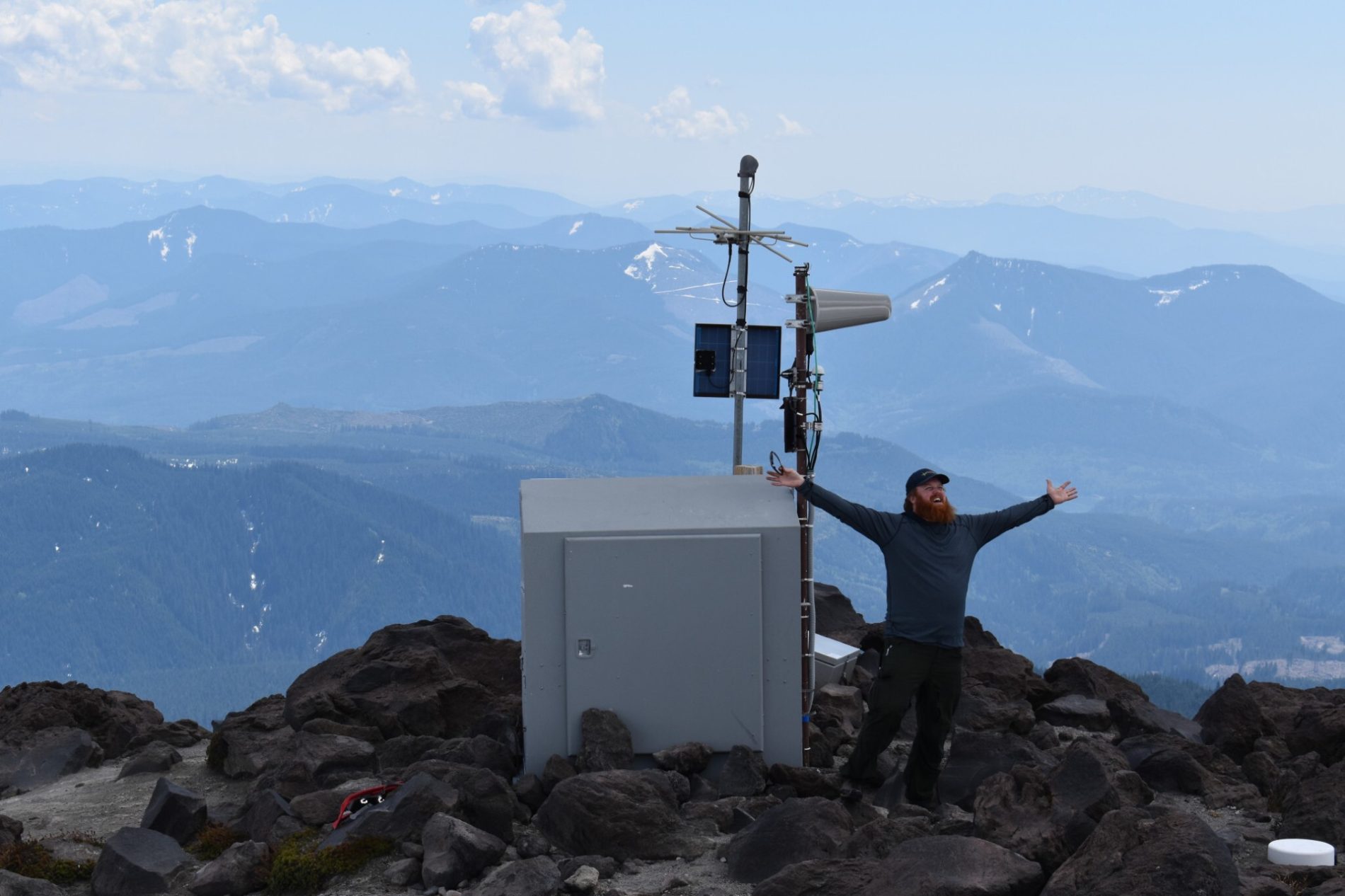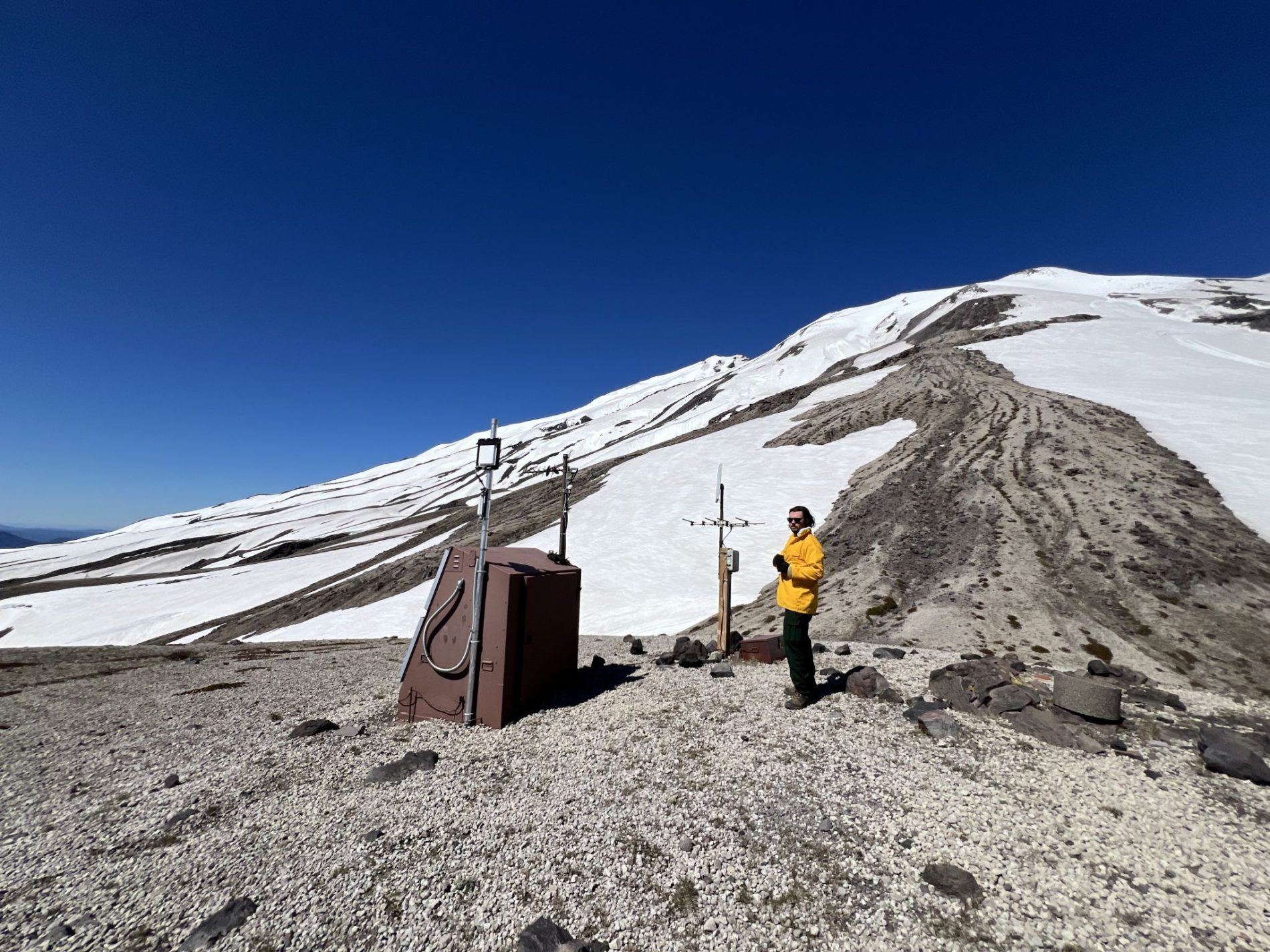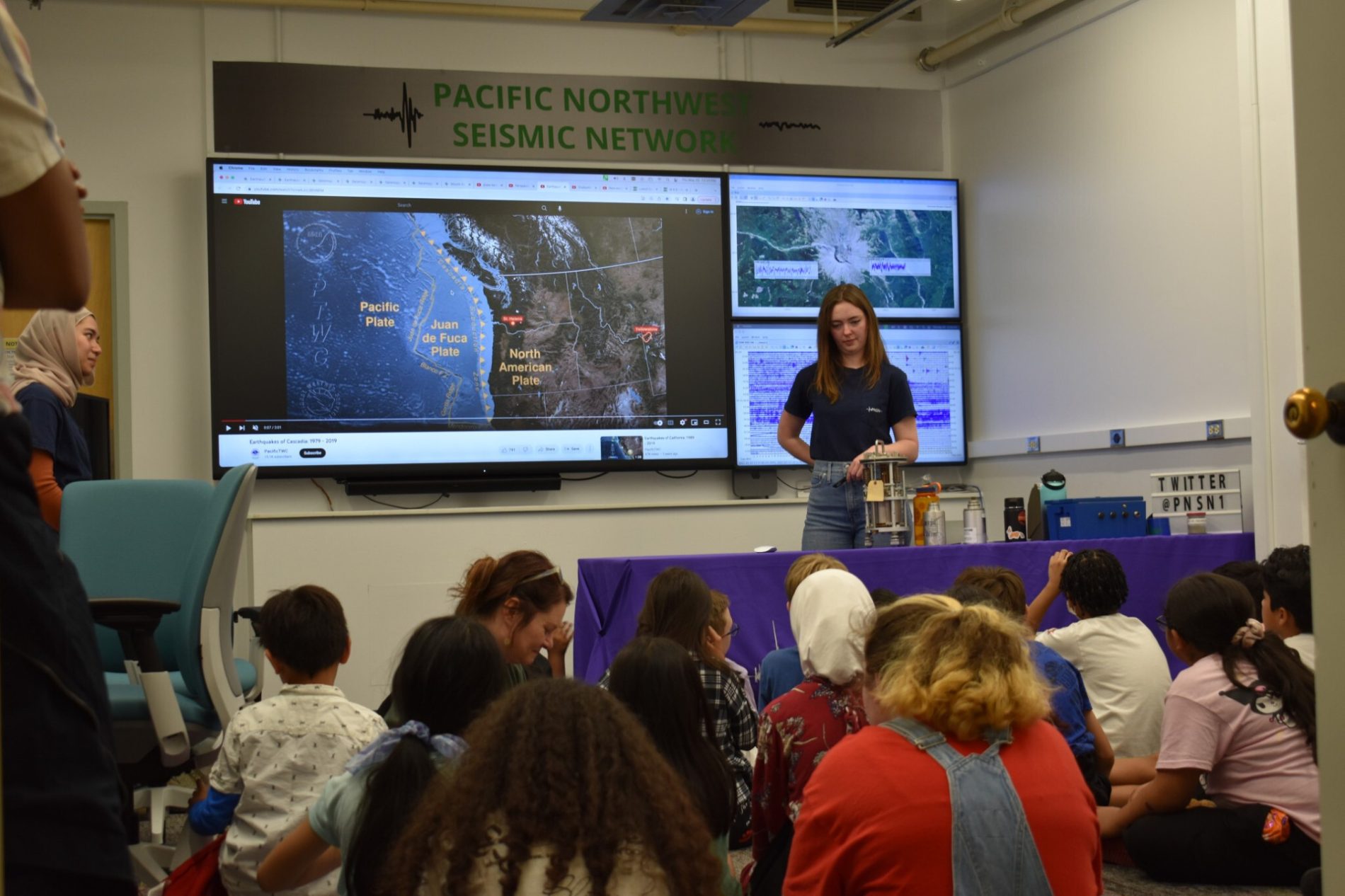Super-sizing the Pacific Northwest Seismic Network in the Era of Earthquake Early Warning

The Pacific Northwest Seismic Network (PNSN) has been a part of ESS in some form since about 1969. Our founding date depends on how you define it, says Emeritus Research Professor Steve Malone, who’s been here for much of that history and still is very much a part of our seismological brain trust. In the early days, PNSN operated a small handful of permanent seismic stations in Washington and later Oregon. Over the course of the 1970s and 80s, our network grew to a little more than a hundred stations, with a focus on the Cascade volcanoes spurred by the 1980 Mount. St. Helens eruption, and stayed about that size through the end of the 1990s. Did you know the UW generates the earthquake information for OR and WA that you find on earthquake.usgs.gov?
But things have changed! Today, PNSN operates a vast system of nearly 800 seismic stations across the two states, with all of the data streaming in real time into our servers 24/7 every day of the year. A number of factors have sped this growth over the years, but by far the most important driver in the past decade has been the development of the ShakeAlert Earthquake Early Warning system — a partnership among the U.S. Geological Survey and five key universities, UW prominent among them — that covers all of Washington, Oregon, and California.
ShakeAlert has two major elements: the detection of earthquakes as soon as shaking begins at the nearest stations, and a fast and sophisticated set of computer algorithms that are constantly listening to the data streams and can compute earthquake magnitude, location, and predict expected shaking intensities, all within one to five seconds after the first seismic wave hits the nearest station – much faster than the damaging seismic waves spread very far from the origin. If the event is big enough, an alert message is created that is broadcasted to mobile devices by the U.S. Wireless Emergency Alert system (think AMBER Alerts), plus the MyShake app and all Android phones as a built-in feature. Advance warning of shaking of a few seconds to as much as a minute or more for truly massive quakes can give people time to Drop, Cover, and Hold On (and no, getting in the doorway is not a recommended action anymore!). Even better, the alerts also enable a variety of automated actions for our infrastructure, enabling hospitals to stop sensitive procedures, water systems to be secured for shaking, and more.

All of this depends on having seismometers nearby wherever an earthquake strikes in the PNW. To make that happen, we have doubled the size of PNSN’s instrument network since 2015, including a massive expansion of our ability to send data back (“telemetry”) from stations on mountaintops and ridges, in school buildings and firehouses, and every imaginable site in between. The newest development in ShakeAlert is the incorporation of GPS stations that can help us obtain the magnitude of the largest earthquakes in real time using a method called GFAST, largely developed and implemented here at PNSN.
To do all this, we have gone from a staff of about a dozen a decade ago to 23 full-time PNSN employees in ESS today, including the all-important role of “Duty Seismologist” on call 24 hours a day. And in fact, PNSN is even larger than that, as it encompasses an embedded USGS staff of six here on campus, as well as a tightly integrated partnership with our colleagues and friends at University of Oregon’s Oregon Hazards Lab, which has its own staff and budget to run most of the network sites in that state. Essential graduate students are also engaged in leading-edge research on, for example, machine learning approaches that can improve our scientific products. Equally important are the undergraduate student workers who help tremendously with everything from field operations to our social media and public outreach presentations.
PNSN has become embedded in the life of the Pacific Northwest, as the original and trusted source of earthquake information whenever folks here feel a little shake. And when a bigger one comes, everyone in our region could be touched by our work through an earthquake early warning. To us, this embodies our ESS mission of great science in support of society.

Visit the PNSN website to learn more about the Network, view an interactive map of recent earthquakes in Washington and Oregon, and read an overview of PNSN’s outreach efforts. Teachers, if you want to shake things up a bit in your classroom, schedule a field trip to the PNSN lab!